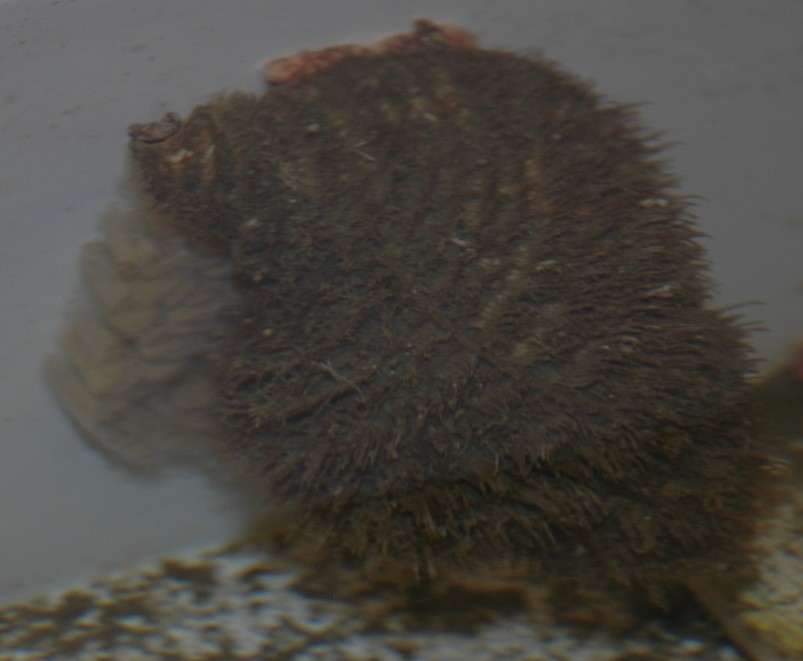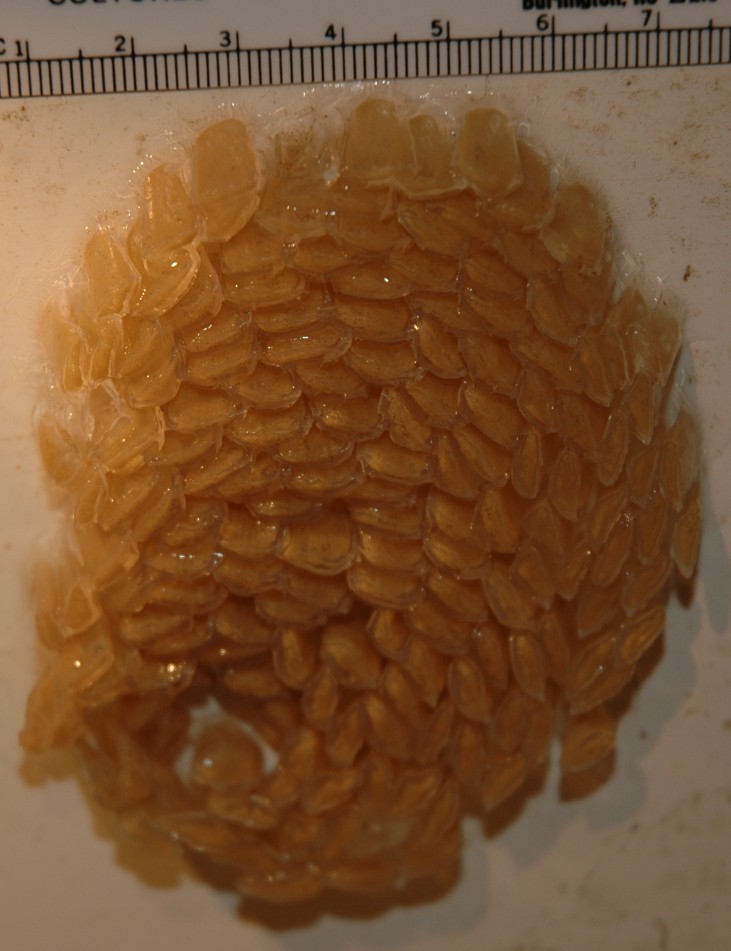Fusitron oregonensis (Redfield, 1848)Common name(s): Hairy triton, Oregon hairy triton |
|
| Synonyms: Argobuccinium oregonense |  |
| Phylum Mollusca
Class Gastropoda Subclass Prosobranchia Order Mesogastropoda Suborder Taenioglossa Family Cymatiidae |
|
| Fusitron
oregonensis from 15 m depth, Sares Head. Total
length
13 cm.
Besides the hairy periostracum, there is a tubeworm and several tunicates growing on this individual. Note the siphon protruding from the siphonal canal at the left. |
|
| (Photo by: Dave Cowles June 2005) | |
How to Distinguish from Similar Species: Ceratostoma foliatum, the leafy hornmouth, is approximately the same size and shape but has no brown bristly periostracum. Snails such as Trichotropis cancellata from family Capulidae do have bristly periostracum but rarely exceed 4 cm, have a more round aperture, and do not have a siphonal canal.
Geographical Range: Aleutian (Pribilof) Islands to San Diego, CA; also in Japan
Depth Range: Very low intertidal to 2000 m. More abundant subtidally than intertidally.
Habitat: Rocky bottoms (not found as often on soft bottoms).
Biology/Natural History: Feeds on ascidians (such as the one growing on the shell!), urchins, bivalves, sea stars, brittle stars, chitons, abalones, and polychaetes. Urchins which have been attacked by this species have a blackish, tarlike discolored scar. It produces sulfuric acid in its salivary glands, which may help in boring through shells. A gland in the proboscis secretes an anesthetic used for subduing prey. It feeds with biting jaws as well as a radula. This snail has separate sexes, which move to shallower water to spawn. The egg masses are large spirals of attached grains that look like bluish, translucent corn. The females lay their eggs in communal masses (called "sea corn") from up to 30 females. It takes each female about 2 weeks to lay her entire clutch of eggs. Veligers hatch from the eggs in about 8 weeks. Humans should not eat this snail because it carries a pathogen in its salivary glands which can be fatal to humans. The empty shells are often inhabited by the largest species of subtidal hermit crabs.
| Return to: | |||
| Main Page | Alphabetic Index | Systematic Index | Glossary |
References:
Dichotomous Keys:Kozloff 1987, 1996
General References:
Gotshall,
1994
Gotshall
and Laurent, 1979
Harbo,
1997
Harbo,
1999
Kozloff,
1993
McConnaughey
and McConnaughey, 1986
Morris,
1966
Niesen,
1997
O'Clair
and O'Clair, 1998
Ricketts
et al., 1985
Sept,
1999
Scientific Articles:
General Notes and Observations: Locations, abundances, unusual behaviors:
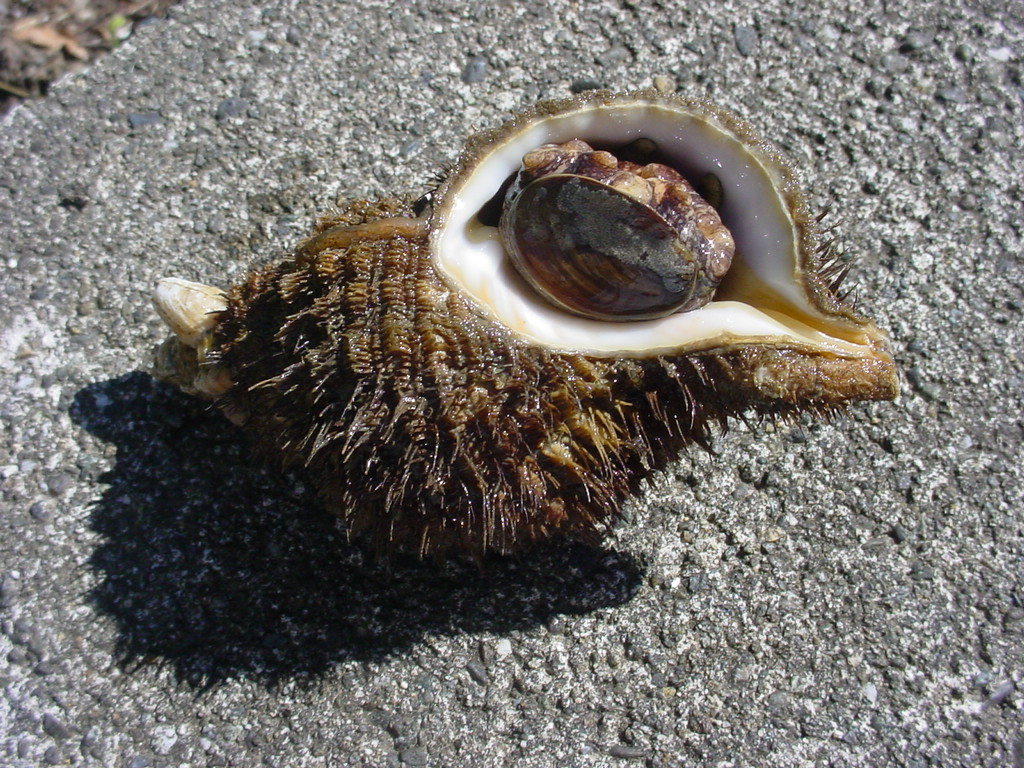
Note the wide aperture, long but open siphonal canal, and horny operculum which is smaller than the widest dimension of the aperture. A barnacle is growing near the apex of the spire.
Photo by Dave Cowles, June 2005
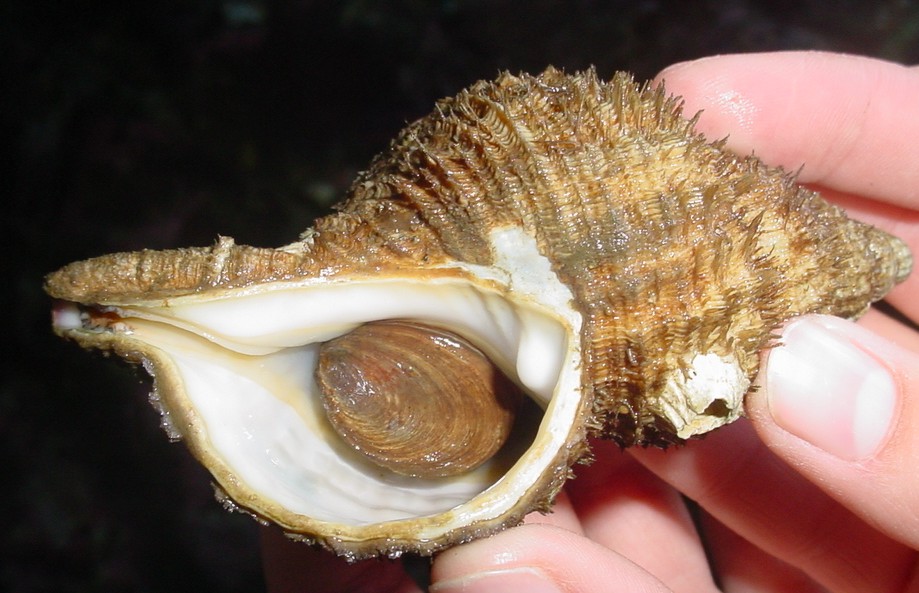
This individual has slightly less hairy periostracum. Photo
by
Dave Cowles at Friday Harbor Labs, July 2006
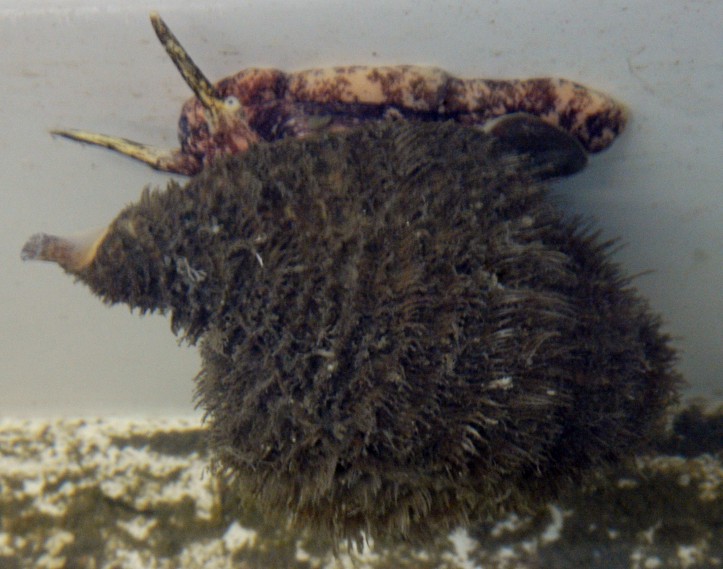
The animal's body is a pinkish tan mottled with brown. Note
the
siphon extending from the siphonal canal.
This animal is clinging to the side of a tank so its shell is farther
off the body than would normally be seen.
After a few days in the tank the above individual began laying
eggs.
Although I inadvertently disturbed the individual and removed it from
its
eggs at least twice, over the course of a week it returned again and
again
to the same egg mass and continued laying eggs. The eggs are
cemented
to the substrate in a spiral pattern of capsules (see photos
below).
Each capsule has several hundred eggs (see photo below).
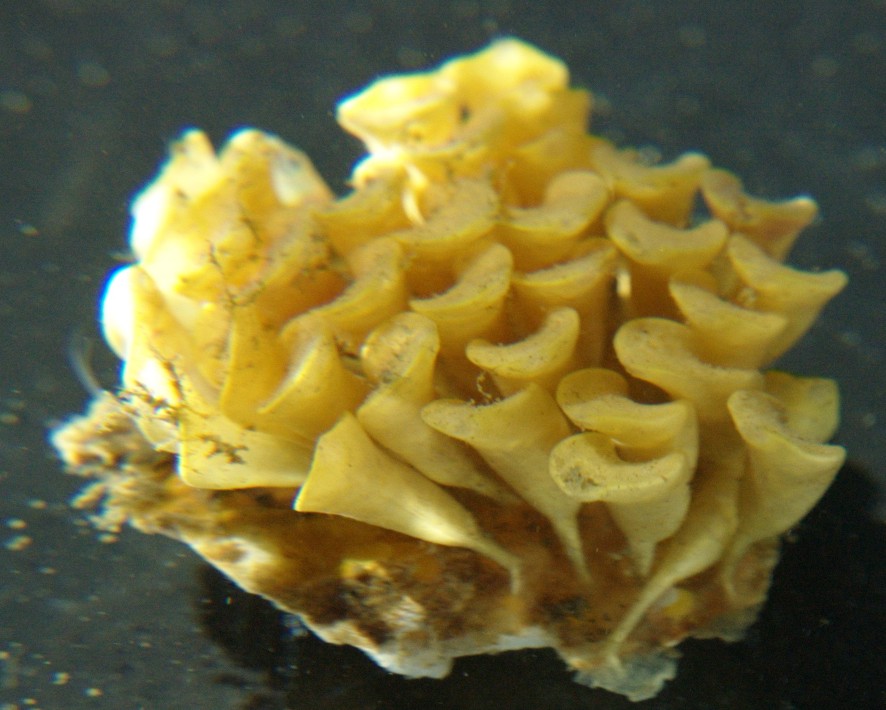
This egg cluster was brought up from 110 to 180 m depth in the San Juan Channel, 2010. It is attached to a side plate of a large barnacle. Cluster width 3 cm.
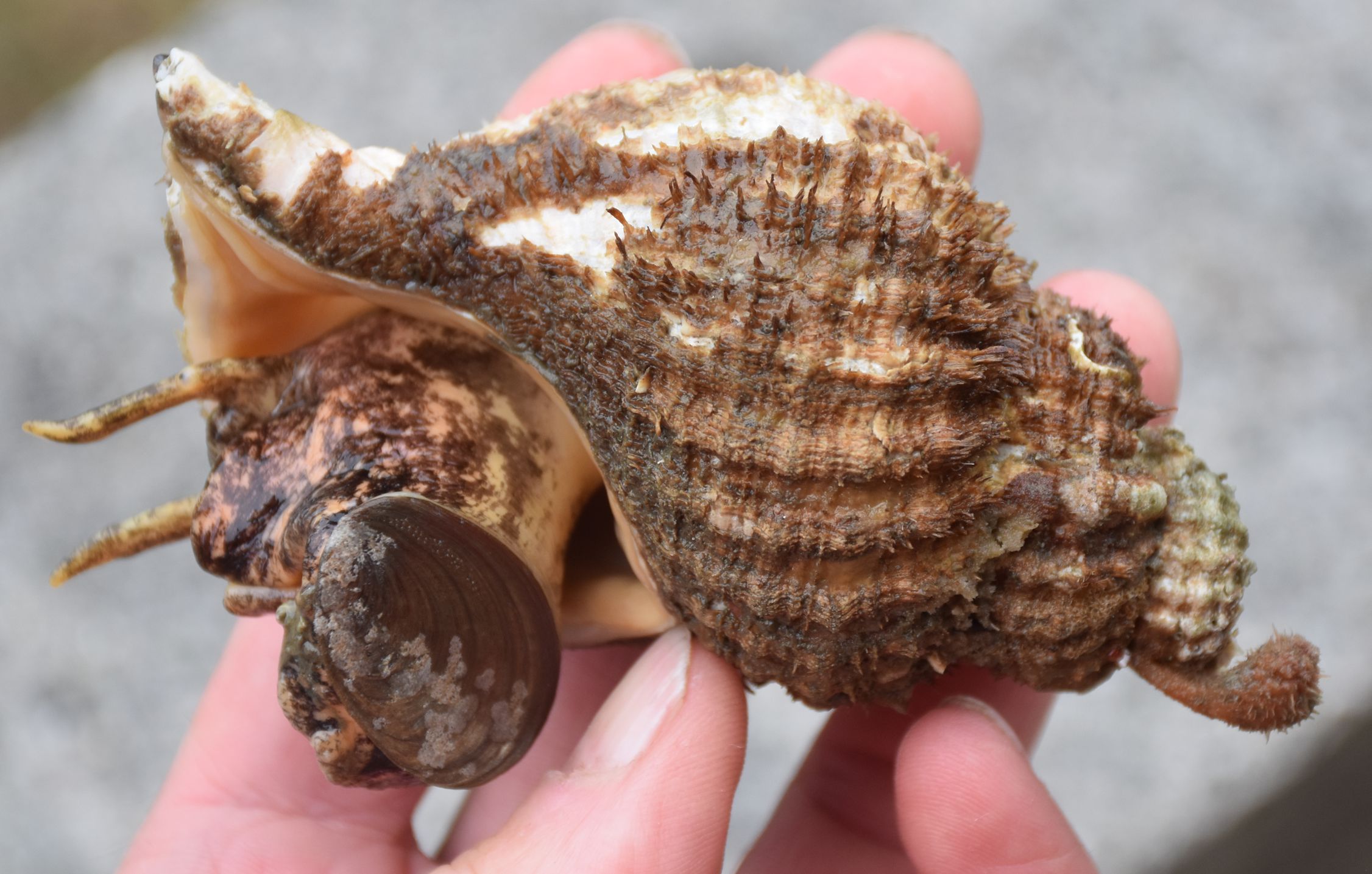
This
active individual can't wait to get moving again even while I am
holding it. Total length of the shell is 10 cm. The tunicate attached
on the right is Boltenia villosa. Photo by Dave Cowles, July 2020.
Authors and Editors of Page:
Dave Cowles (2005): Created original page
